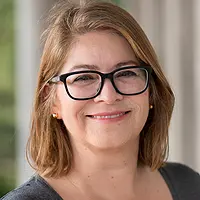
A record number of participants, and yet only 15 of the 133 world leaders present were women. A historic commitment to transition away from fossil fuels, but no specifics on how to do it. With the latest meeting of the Conference of the Parties to the United Nations (UN) Framework Convention on Climate Change (known as COP28) a month behind us, we can’t help but wonder, what could it have looked like if women had been more involved?
While we’ll never know for sure, evidence suggests that the outcome could have been different – and stronger. Much of today’s narrative around women and climate change focuses on the fact that women are most vulnerable to climate change’s impacts and the least resourced to deal with them. This is a key issue, but is just one of the reasons women need to be more meaningfully included in climate leadership if we are to avert a global catastrophe.
In this blog post, we look at women’s participation in climate leadership through a human rights lens, explore the evidence, and suggest steps the next COP could take to more meaningfully involve women.
Women’s inclusion is a matter of justice and human rights
Much of the energy at COP28 was around abating fossil fuels and averting a catastrophic rise in global temperature. A just energy transition cannot happen without the full consideration of how it affects various demographics, including women. Without the inclusion of women, decision-making bodies like the COP risk making decisions that do not reflect the lived experience of women, yet that deeply impact them.
A human rights approach is needed to challenge the existing power structures and norms of the annual COP and its delegations. Right now, women’s political participation in spaces at COP where key decisions are made is up to each delegation’s discretion and political goodwill. Framing women’s participation as a human rights issue turns women’s access to these spaces into a legal obligation.
The basis for this change already exists: Multiple international treaties such as the UN Convention on the Elimination of All Forms of Discrimination Against Women (CEDAW) and agreements like the Sustainable Development Goals have enshrined gender equality as a universal human right. Women’s political participation, including representing their governments at the international level, is key to full enjoyment of this right. UN bodies like the CEDAW Committee already monitor countries' compliance and can hold states accountable when they fail to provide women equal opportunity to participate in international fora like the COP.
The evidence for inclusive leadership
While we will never know for certain if COP outcomes to date would have been stronger – and put us on a better path to a just energy transition – if women were more involved, evidence from similar processes suggests that they would have been.
Research by the International Peace Institute found that when women’s groups are able to influence peacemaking processes, peace agreements are almost always reached and are more likely to be implemented. When women individually contribute in meaningful, influential roles, like as negotiators, peace agreements are more likely to last. One reason for this is that women are more likely than men to be perceived by fellow citizens as trusted members of society that value social and civic responsibility.
Women’s political participation is also linked to greater environmental outcomes for countries and women tend to think more long-term, are more inclusive, and more concerned with matters of justice than men. Gender diversity in decision-making has been found to disrupt group-think and drive innovation, which is urgently needed to address climate change.
Perhaps the best proof is that most of COP’s greatest outcomes on climate change’s thorniest issues have been driven by women, from the Paris Agreement to the COP27 loss and damage fund. These are real-life examples of women leading innovative solutions that have changed the trajectory of COP negotiations and, by association, of climate change itself.
Recommendations for gender equality at COP
With human rights and climate justice necessitating a bigger role for women in climate leadership and evidence suggesting this would have a bigger impact on climate mitigation, adaptation, and resilience, the question now is: How do we get there?
Support local representation
Change starts locally. COP delegations are drawn from countries and their high-level leaders. Women aren’t just going to appear at the negotiating table if capacity and leadership strengthening isn’t happening at the local level. International development projects are well-placed to help address this issue alongside their host country counterparts.
Build political will
Political will is also important for elevating women’s voices in formal decision-making processes. Conversations about gender equality are happening at COP, which is encouraging, but more action and accountability are needed. Leaders currently in the room should integrate gender considerations into critical discussions and deliberations on topics like the just energy transition, climate finance, new technologies, and more, in addition to the gender-themed day at COP.
Promote gender balance
Representation matters and women are currently visually absent from the narrative of COP. The next COP president should set a goal and mechanism for accountability on gender balance. The COP could employ temporary measures like quotas, which are in line with human rights approaches, to boost women’s participation and ensure delegations are more balanced. When countries submit their delegations for registration and women are not equally represented, COP organizers could deny their registration or require them to justify these gender gaps and share a concrete plan for bridging them by the next COP. The COP should also set a deadline for equal participation as part of its gender action plan, and at least one of the top roles at each COP (the president or executive secretary) should be filled by a woman to ensure women’s participation and perspectives are included at the highest levels. The COP presidency could even shift to being co-chaired each year by a woman and a man.
Foster gender equality
Gender balance is a starting point, but we also need to move from balance to equality, which requires being intentional about the meaningful participation of women, with intersecting identities, at all levels in climate negotiations, action, and decision-making, including on priorities and funding. Creating a COP environment and schedule conducive to children being present and/or offering childcare can help women, who are often the de facto family caregiver in many countries, participate. The COP should also ensure gender diversity in panels and speaker line-ups in the main plenary as well as across side events.
Finance change
Gender equality requires financing to make it happen. The COP could dedicate funding to better enable women’s participation, especially women from the global South, indigenous groups, and other under-resourced communities. High-level talks at COP28 on financing a gender-responsive just energy transition were an encouraging start as money talks – and where the money is, action happens. Similarly for women’s participation, we need to put money behind it to make it happen.
Actions toward a more inclusive COP
At current rates, gender balance in national COP delegations will not be reached until 2040, with gender parity in heads of delegations so far out that we can’t forecast when it would be achieved. Despite gender equality being a universal human right and enshrined in multiple human rights frameworks and treaties, the COP and similar fora are falling short on upholding this right by letting women’s participation languish. Action and accountability are needed to change this.
The urgency of climate change, combined with the evidence on the positive impact of women’s participation, should compel us all to rethink how to prioritize and facilitate women’s meaningful inclusion and political participation at all levels, including those with the most decision-making power, not only at the annual COP meeting but also throughout global efforts to combat climate change.

